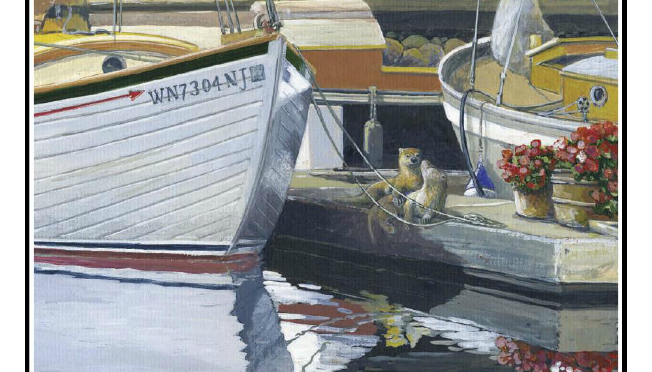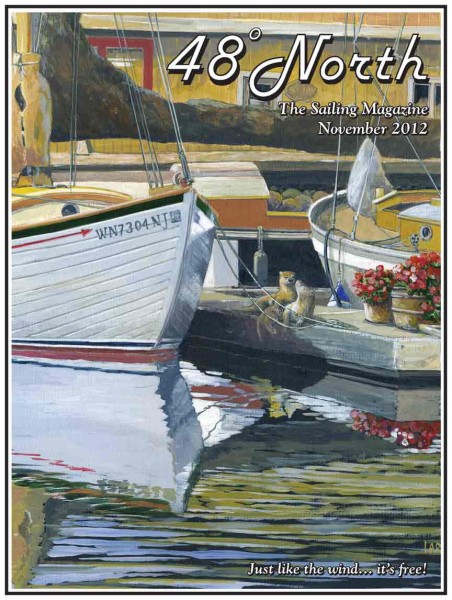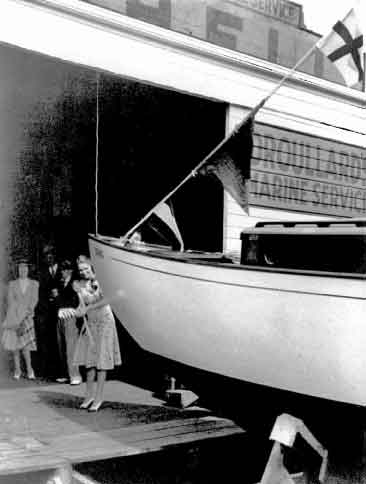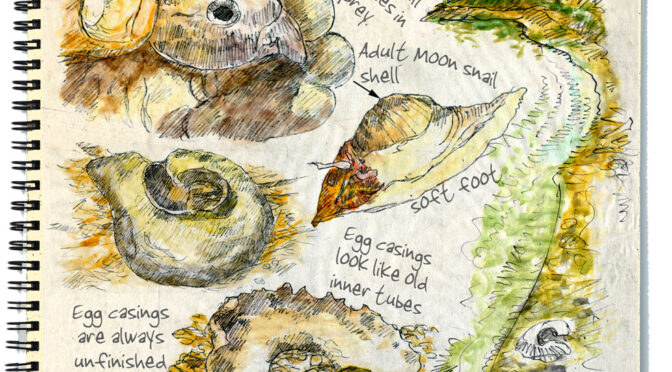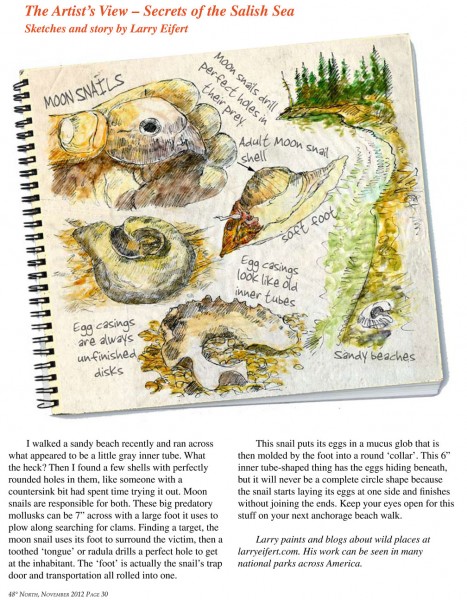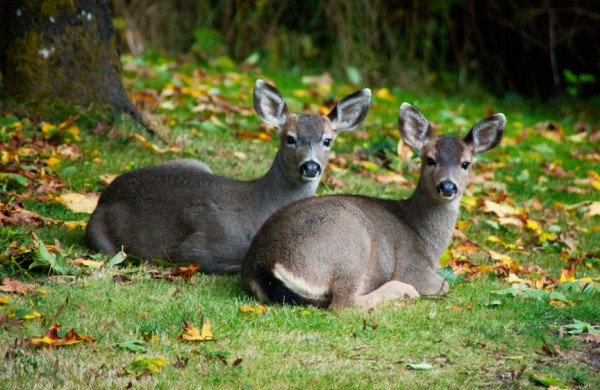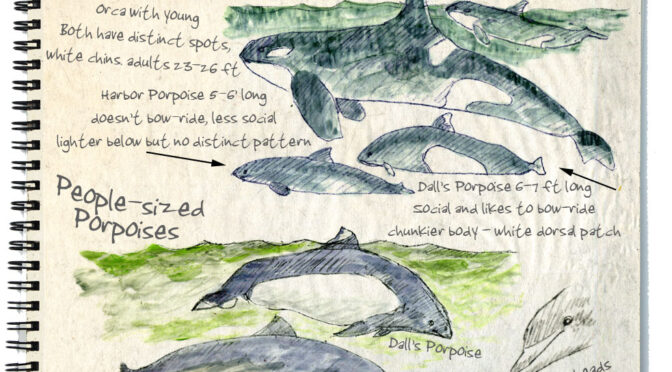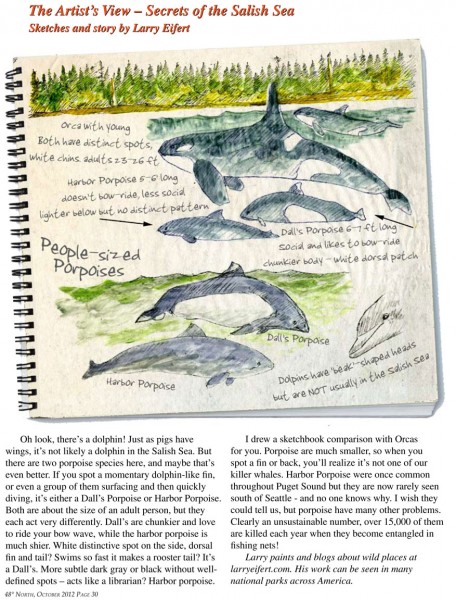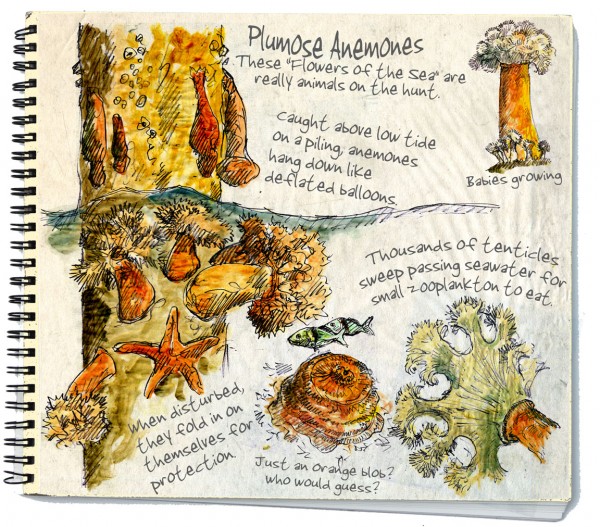Just click on the page and it’ll enlarge.
What to paint for my December 48-North magazine page? Well, I was hiking on the beach trail in Port Townsend and two beautiful harlequin ducks were just sitting there on a rock, eyeing me carefully and getting nervous. I stopped – they looked. I immediately wondered if these were the exact same ducks I saw in summer up on the Dosewallips River? Could be, but not likely. After that day on the river, I painted this 24″x48″ acrylic of that spot where the river was roaring in full spring run-off and the alder leaves still in bud.
If you read the magazine page at the top, you’ll see that harlequins spend their summers up in the mountain rivers diving in the near-freezing glacial melt waters for insects. Winter comes and here they are in our backyard (well, almost) doing the same in the Salish Sea -where waters are considerably warmer. I’d like to think I saw the same two birds, but the best thing about birding is that I’ll never know.
I’m still rebuilding the web store for jigsaw puzzles, posters and prints and it’s coming along. If you try to purchase something and it doesn’t work, just email us.
Thanks for reading this week.
Larry Eifert
Click here to go to the online blog this was to.
Click here to go to our main website – packed with jigsaw puzzles, prints, interpretive portfolios and lots of other stuff.
Click here to check out what Nancy’s currently working on with her photography.


